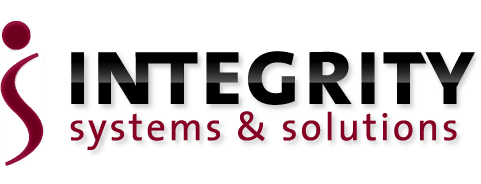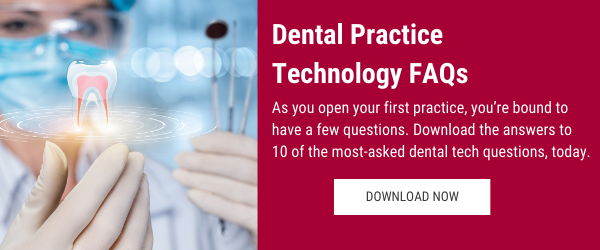
By: Michael Vincelette on December 21st, 2021
Top 5 Problems Doctors Face & How Medical Technology Can Solve Them
In today’s digital world, consumers expect more from businesses— and healthcare companies are no exception. Patients are no longer passive participants in their medical care. Instead, they have a wealth of information at their fingertips and expect transparency, convenience, and easy information access from their healthcare providers.
At the same time that consumers’ expectations are changing, their healthcare costs are rising. In fact, according to Deloitte’s 2019 Global Health Care Outlook analysis, healthcare expenditures are expected to reach $10.059 trillion by 2022, which is an increase of 5.4 percent from 2017. With rising healthcare costs showing no sign of slowing down, it has become more important than ever for providers to offer high-quality care while streamlining their own operational systems and processes.
The changing healthcare landscape presents new challenges for healthcare organizations. While new systems and emerging technologies may help hospitals, physicians' offices, and other medical facilities to offer more effective care for their patients, they can also create new challenges. Healthcare organizations that want to remain efficient and effective need to address these concerns before they lead to more complicated and costly issues.
Here are the top five problems that doctors face along with their technological solutions:
Technology Problem #1: Keeping Up with Medical Technology Changes
Perhaps one of the greatest challenges impacting doctors today is outdated technology. While new systems and applications can transform the way that healthcare providers offer their services, organizations need to stay up-to-date with their equipment and infrastructure if they want to be able to utilize these technologies.
Solution: Planning Ahead for Upgrades and New Purchases
The best way for healthcare facilities to keep up with changes in technology is to plan ahead and anticipate the need for updates and upgrades. Organizations that don’t have a fully-staffed in-house IT team can work with a managed service provider to ensure that they have a plan for their technology needs both now and in the future. Check out our article, Predictions in Dental Technology for 2022, to help you anticipate your future medical technology needs.
Technology Problem #2: Reimbursement for Medicare and Medicaid
Healthcare providers are responsible for recording and storing patient records in a specific, secure format in order to be reimbursed by Medicare and Medicaid. If they want to get paid for services rendered, healthcare providers need to access, complete and retrieve electronic information which serves as proof that a patient has received certain healthcare services. When this information is poorly managed or disorganized, it may take a provider longer to get reimbursed, or they may not get reimbursed at all.
Solution: Electronic Health Record (EHR) System
Electronic health record (EHR) systems have become an industry necessity for healthcare providers who want to simplify both recordkeeping and Medicare and Medicaid filing. EHRs make it easy for providers to access and document the necessary information for reimbursement after they have provided the services. By ensuring a standardized format for the necessary information, EHRs help speed up the process of reimbursement. Take a look at 5 Ways Going Paperless Can Improve Your Dental or Medical Practice to see for yourself.
Technology Problem #3: Communicating with Patients and Providers
Effective patient outcomes may involve more than one healthcare provider, but communication among an individual’s medical providers is often disjointed. To make matters worse, consumers often don’t have easy access to their own healthcare information to pass on to their medical team when they need to.
Solution: Healthcare Applications
Healthcare applications like online and mobile portals and apps make it easier for providers and consumers alike to access information when they need it. By enabling patients to take control of their own health outcomes through real-time access to their medical information, providers empower patients as well as provide convenience. Consumers can access this information and can share it with other providers when necessary, which enables them to receive the best care possible.
Technology Problem #4: Managing Large Volumes of Patient Data
Healthcare providers regularly generate large volumes of patient data, from patient encounters, payers (public and private), labs, pharmacies, and other medical service providers and related vendors. Healthcare facilities need to securely store this data while still making it easily accessible to providers and patients when they need it. Improper storage and mismanagement of data can have disastrous consequences, leading to compromised patient privacy, misdiagnosis, and inadequate treatment.
Solution: Secure Cloud-Based Data Systems
Secure, cloud-based data systems make it easy for healthcare professionals to access and update real-time patient data such as medical history, appointments, and treatment plans. Not only is cloud storage ideal for real-time data retrieval, but it can also be more cost-effective for the healthcare facility. Here are the answers to some important questions about backing up your practice’s data to make the switch to cloud-based systems.
Technology Problem #5: Offering Remote Access to Telemedicine
Some healthcare providers resist offering more remote accessibility for their services. Telemedicine can help improve health outcomes by making it more convenient for patients to get timely access to medical professionals. However, doctors who want to offer telemedicine options need to have the proper systems in place to provide reliable, secure service.
Solution: Effective Web and Mobile Applications
For healthcare providers who want to offer a telemedicine option, web and mobile applications can be built to their specifications. Telemedicine apps have become a popular way for doctors to provide a more accessible and secure experience for patients who benefit from getting the care they need when they need it. When using mobile apps, it’s important to understand how to protect your Internet of Things (IoT) devices. Read more about some concerns when using IoT medical technology.
Streamline Your Healthcare Organization with the Right Technology
New technologies bring new opportunities for healthcare providers from both a patient care and business perspective. However, organizations need to utilize these medical technologies wisely if they want to improve efficiency and effectiveness within their organization. This not only requires the right IT equipment and infrastructure, but also the knowledge necessary to optimize its value.
At Integrity Systems & Solutions, we specialize in working with physicians and medical companies to develop, implement, and manage the right technology solutions for their business. Our goal is to help your organization streamline its processes and boost its bottom line through strategic IT management.
In our 10 FAQs About Dental Practice Technology ebook, we explore in-depth answers to important questions about dental practice technology— like these and more. Download your free copy, today.



